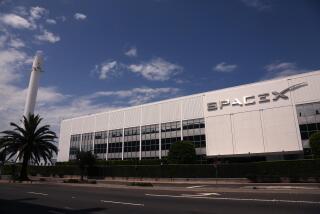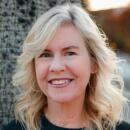Op-Ed: Forget it secessionists — we’re one California, indivisible
The latest California secession movement showed off its fantasy map of the state last month. It’s kind of hilarious. It splits us this way: Old California looks like a narrow chain of counties starting with Sacramento, Solano, Napa, Sonoma, and heading south around San Francisco Bay and down the coast, ending with Santa Barbara, Ventura and Los Angeles. Fifteen total. That’s it.
New California is everything else: 43 counties the secessionists appear to believe are made up mostly of pristine mountains, gold-tinged waves and right- (not left-) thinking citizens, preferably U.S. born.
These rebels filed for divorce from Old California in Marysville on Jan.15., with a declaration of independence. They read “Grievance 1” (40 more are planned) in public at two locations: Sutter County and Contra Costa County (though this East Bay enclave went 3-to-1 for Hillary Clinton in 2016). According to their website, New Californians are “egregiously aggrieved.” People are often egregiously aggrieved, but divorce doesn’t ensure happiness.
Dividing California would change many things: It would mean a long, long border — will we need another wall? In my home county — Riverside, which shows up on the new state side of the map — there are millions of acres of fulfillment centers and warehouses, including Amazon’s. Truck drivers would have to cross that border millions of times a week to deliver goods. My students would no longer attend UC Riverside exactly; the 10-campus University of California would no longer exist. And have the founders of this movement discussed it with the Inland Empire fans of the Dodgers or the Central Valley’s ’49ers fans?
What secession really seems to be about is the chance to air language like this, from “Grievance 1”: “Citizens in California are no longer afforded proper United States Constitutional guarantees of protection but instead are subjected to domestic violence and lawlessness which is killing, wounding and maiming legal California citizens at the hands of foreign illegal non citizens.” (New California wants to claim Imperial, San Bernardino and Riverside counties, where Latino, Asian American and African American people constitute a majority, but issues statements like that?) I don’t think my family, students, friends and neighbors will be down with the program.
The movement’s website whisks you through five different maps with various shadings for the state’s 58 counties and little explanation other than color-coded “chartered,” “pre-chartered” or “interested” designations. Exactly what is signified is hard to figure out. Riverside County is “pre-chartered” but without the approval of anyone I know. Even more surprising: The chair of New California is from Riverside. He ran for governor twice, but not memorably.
I got in touch with D.J. Waldie, who writes eloquently about California history. He still lives in the house where he grew up, in Lakewood, L.A. County, Old California. (Sadly, should the secessionists succeed, Waldie and I — fellow California natives now — would be from separate states.) He said: “Dismembering the state is an old story with an enduring plot. Busting up California, as actually voted by Southern Californians in the late 1850s, seeks to codify racial exclusion through political geography.”
People are often egregiously aggrieved, but divorce doesn’t ensure happiness.
It was the wrong idea then and it’s the wrong idea now. I wear a gold necklace of the whole state — not part of it. I read maps of California border to border for fun. My favorites: a 1982 Thomas Guide of Los Angeles and a 1999 Auto Club map. I like to see how much has changed, how much stays the same. GPS can’t deliver the Auto Club’s dotted lines around the ancient lake that once covered the Coachella Valley or the Thomas Guide’s amazing street-by-street flip-through grid.
I have been to every one of the 58 counties. For years, my family went camping in pickup truck and small trailer, visiting the wonders of California. My mother and stepfather, my father and stepmother — born in Switzerland, Canada, Colorado and Texas, respectively — were devoted to California, all of it. My stepdad took a photo of me at the Susanville sign when I was 10. He shook scorpions out of my sleeping bag at Anza Borrego. When our daughters were young, my husband and I took them touring too. We saw elk battling north of Eureka, came through Weed and Ft. Bragg, saw sidewinders on the Nipomo dunes, strawberry fields in Guadalupe and blackberry fields in Hollister.
My father died just as this comical split-the-state scheme surfaced. He arrived in the state by bus, via Route 66, when he was 9. He watched Aimee Semple McPherson preach in the Angelus Temple at Echo Park; he filled smudge pots with kerosene all night in Upland to keep citrus trees from freezing; he modified a car with sewer pipe for a muffler and raced the avenues of Ontario; he stocked cigarette machines in Needles and Blythe. In his last days, at the hospital in Pomona, he was attended by kind men and women from all around the state, but also from the Philippines, India, China, Mexico and Guatemala. He was not “egregiously aggrieved” by their presence.
Me either. Tonight I’ll pick up dinner at a California landmark that wouldn’t exist if it weren’t for the whole epic state and its history: Rice, beans and chicken from a Mexican-food franchise founded by a third-generation Japanese American man born in Carson. I’ll listen to Art Laboe on the radio, spinning oldies and sending greetings to Dinuba, Fresno, El Monte and Stockton. With a device created in Silicon Valley, I’ll check on family in Oakland, West Hollywood, Moreno Valley and Sacramento. There is one California, indivisible, and I am at home in it.
Susan Straight’s new story “The Princess of Valencia” will be published by Amazon Originals this month. Instagram: @susan.straight
Follow the Opinion section on Twitter @latimesopinionand Facebook
More to Read
A cure for the common opinion
Get thought-provoking perspectives with our weekly newsletter.
You may occasionally receive promotional content from the Los Angeles Times.











